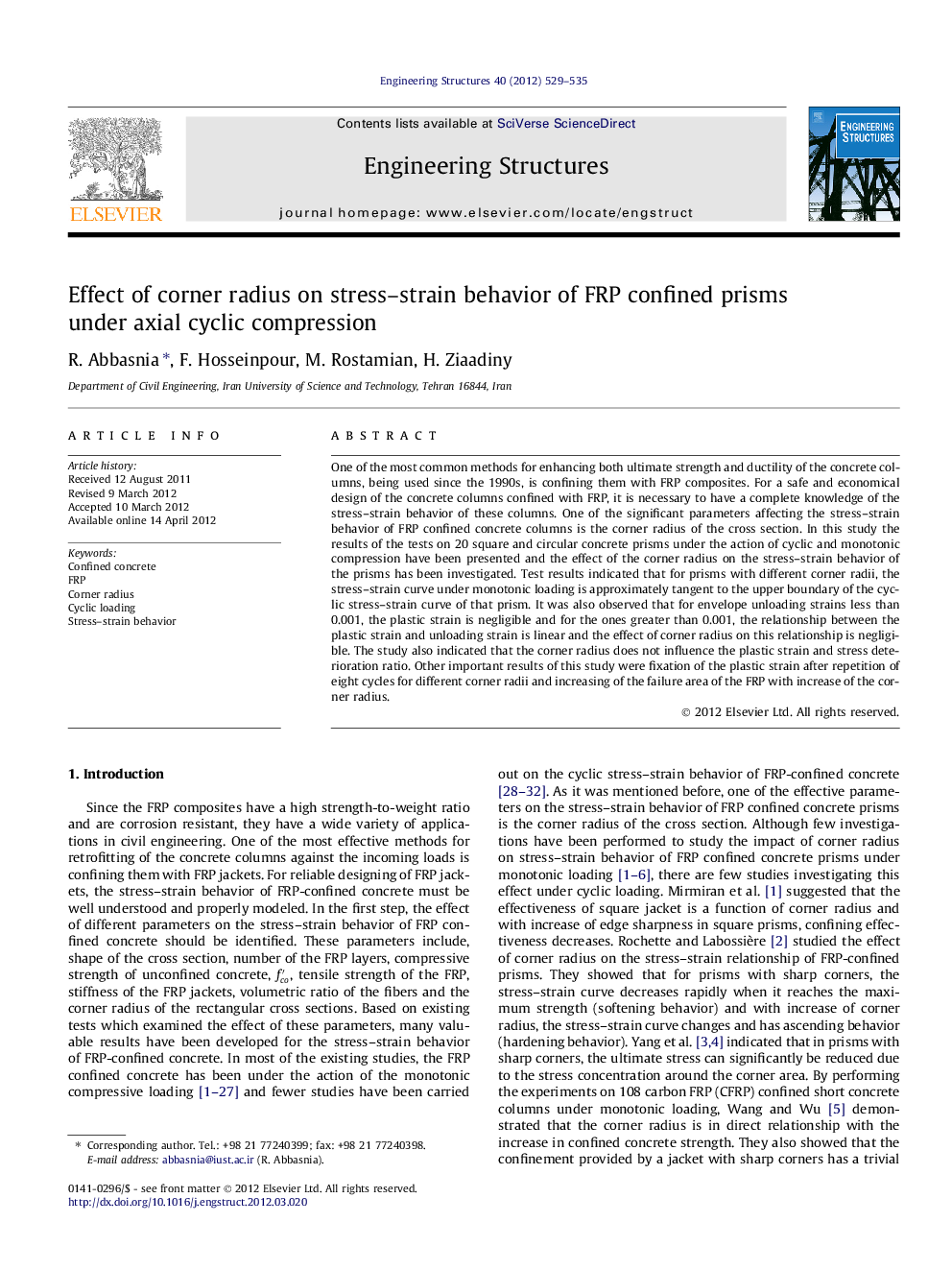| Article ID | Journal | Published Year | Pages | File Type |
|---|---|---|---|---|
| 267518 | Engineering Structures | 2012 | 7 Pages |
One of the most common methods for enhancing both ultimate strength and ductility of the concrete columns, being used since the 1990s, is confining them with FRP composites. For a safe and economical design of the concrete columns confined with FRP, it is necessary to have a complete knowledge of the stress–strain behavior of these columns. One of the significant parameters affecting the stress–strain behavior of FRP confined concrete columns is the corner radius of the cross section. In this study the results of the tests on 20 square and circular concrete prisms under the action of cyclic and monotonic compression have been presented and the effect of the corner radius on the stress–strain behavior of the prisms has been investigated. Test results indicated that for prisms with different corner radii, the stress–strain curve under monotonic loading is approximately tangent to the upper boundary of the cyclic stress–strain curve of that prism. It was also observed that for envelope unloading strains less than 0.001, the plastic strain is negligible and for the ones greater than 0.001, the relationship between the plastic strain and unloading strain is linear and the effect of corner radius on this relationship is negligible. The study also indicated that the corner radius does not influence the plastic strain and stress deterioration ratio. Other important results of this study were fixation of the plastic strain after repetition of eight cycles for different corner radii and increasing of the failure area of the FRP with increase of the corner radius.
► Experimental study of 20 FRP confined concrete prisms with different corner radii. ► Evaluation of the effect of corner radius on the stress–strain behavior of the prisms. ► Investigation of different aspects of cyclic stress–strain behavior of the prisms. ► Investigation of the failure area of FRP in prisms with different corner radii.
